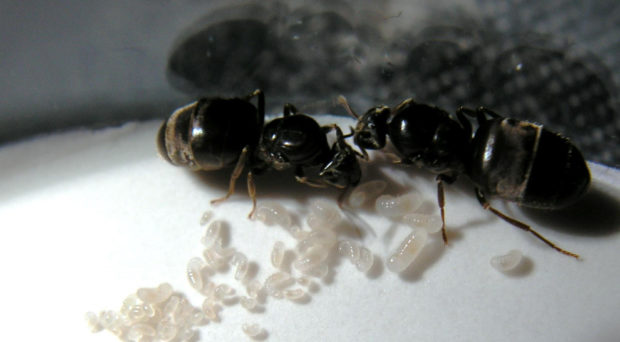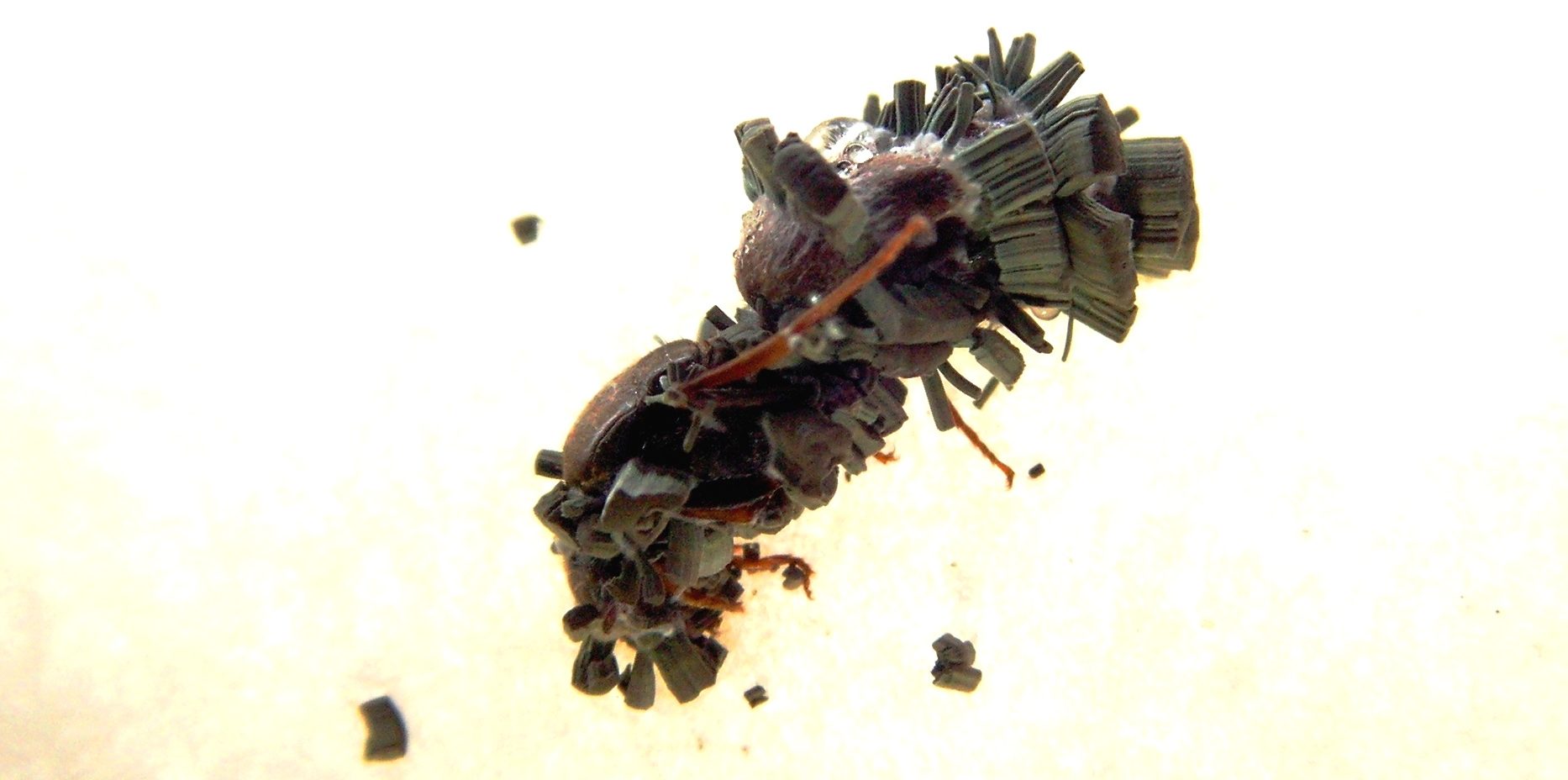
When most people think of an ant queen, they are likely to have an image of a monarch, tended to and protected by her daughters, the sterile workers. Unlike the workers, which carry out all the hard and dangerous tasks, the queen is kept safe, deep within a subterranean bunker that is her nest. There she will live, for perhaps as long as several decades (the current record being about 30 years), laying hundreds of eggs every day, whilst being fed and cleaned by a retinue of workers.
However, life for an ant queen does not typically start out this way. In fact, the majority of queens are likely to die before they have even raised their first batch of workers. This is because new queens, produced by mature ant colonies, must leave the parental nest to found new ones.
It is estimated that less than 1% of queens actually survive beyond their first year.
Many founding queens fall prey to birds, spiders and the workers of other colonies during the process, as well as contracting bacterial and fungal infections from the soil that cause disease and death. Moreover, because they do not forage, they must breakdown their own body tissue in order to feed themselves and their brood until their workers emerge, making starvation a likely possibility.
Young colonies are also at risk of being raided by larger ones, which will steal their brood and kill the queen. As a consequence, it is estimated that less than 1% of queens actually survive beyond their first year.
A joint venture
To improve their chances of survival, some queens will found a colony with unrelated queens from other nests. Termed co-founding, this behaviour is thought to be beneficial as a pair of queens may raise more workers faster than a single queen, potentially giving them a competitive edge. Yet, the exact reasons behind co-founding are up for debate and it may simply be the result of overcrowding and competition for the best nest sites.
Co-founding still has its drawbacks, however, since the queens fight to the death for control of the nest once it has workers. Additionally, before this, co-founding may increase a queen’s risk of infection if her co-founder falls sick and dies. In mature colonies, dead and/or infected nest mates are quickly removed from the nest, or destroyed by the workers. These “undertaking” behaviours keep the nest clean and prevent diseases from spreading. In the absence of workers, how do co-founding queens overcome this problem?

We set out to answer this question in our recent BMC Evolutionary Biology article, using queens of the common black garden ant and a generalist fungal pathogen. In our first experiment, we carried out a choice test, to see whether queens, faced with the choice of founding a colony alone or with a queen carrying infectious fungal spores on her body, avoid the pathogen-exposed queen. As a control, another set of queens could choose to found alone or with a sham-treated queen.
Despite the risk of nesting with a pathogen-exposed queen, we found co-founding to be high (about 60%) in all of our treatment groups, suggesting that the avoidance of pathogen-exposed queen is not a mechanism queens use to reduce their risk of contracting infections from co-founders.
In a second experiment, we paired queens with either a pathogen-exposed or sham-treated queen, in either closed or open nests – the latter having a hole that opens to a small arena. Once the pathogen-exposed queens started dying of infections, we freeze-killed the queens in the control group to see how the surviving queens react to both infected and uninfected corpses.

Strange undertakings
We found that the surviving queens performed undertaking behaviours. Namely, corpses were bitten into pieces and buried, or, in the open nests, removed from the nest entirely.
We found that the surviving queens performed undertaking behaviours. Namely, corpses were bitten into pieces and buried, or, in the open nests, removed from the nest entirely. Interestingly, although queens carried out these behaviours before the fungal pathogen became infectious (grew out of the corpse), it seems unlikely that the queens are responding directly to the presence of an infection, because the uninfected corpses were treated exactly the same.
Queens therefore seem to perform undertaking behaviour prophylactically, i.e. before there are any signs of disease on the corpse. From the perspective of the queen, it makes sense to treat all corpses as equally risky, because waiting until the pathogen grows out may be too late to prevent disease transmission. Indeed, we found that biting the corpses into pieces and burying them significantly reduced the risk of the queens contracting a lethal infection from the corpse when the fungus did grow out, presumably because burial prevents transmission of the fungal spores. In other words, performing undertaking behaviours improved founding queen survival.
Our work shows that, in contrast to the typical view of ant queens focussing solely on reproduction and avoiding all risky tasks, queens can perform complex behaviours to protect themselves when they lack workers to do so for them. In fact, there are some ant queens, considered to be more evolutionarily basal species, which still forage during colony foundation. Furthermore, queens that fail to mate and remain in their parental nest begin behaving like workers, and will even forage outside of the nest.
Understanding this behavioural flexibility, and its underlying genetic mechanisms, could provide an interesting insight into what makes a queen a queen, and the evolution of separate queen and worker castes in the social insects.
One Comment